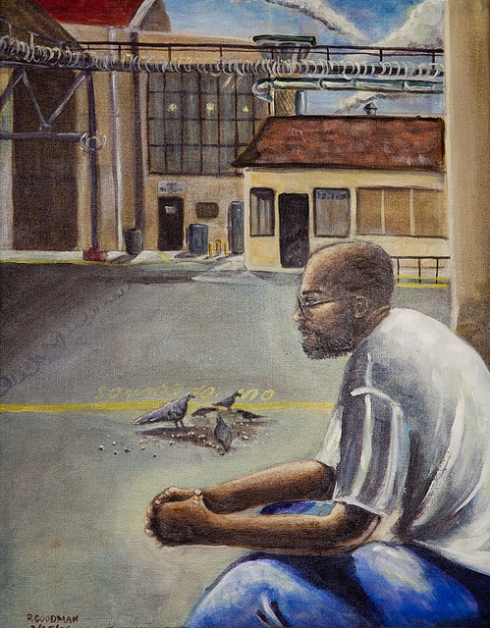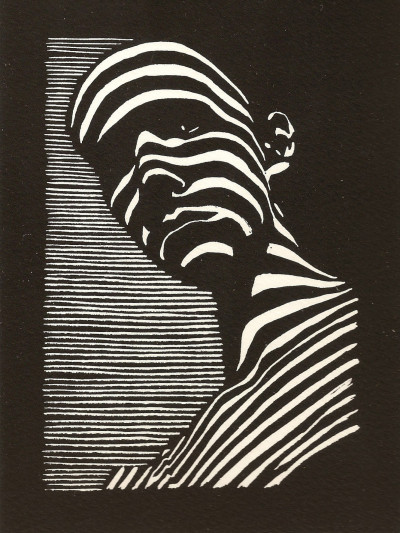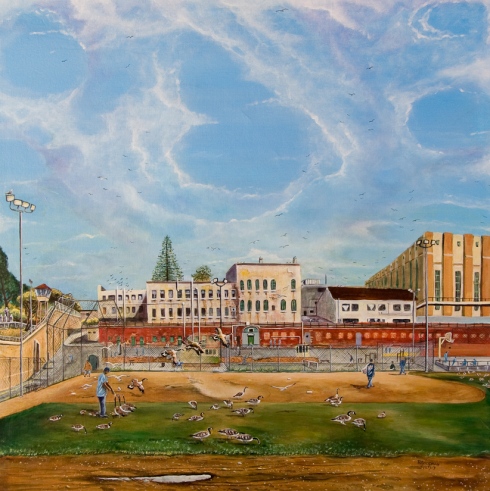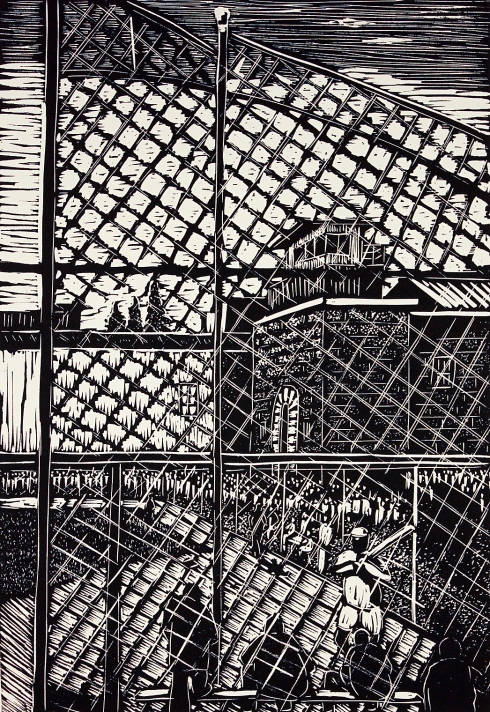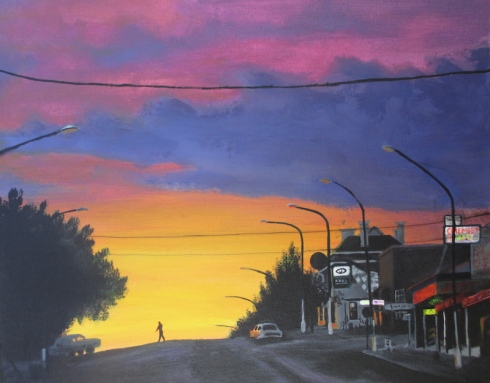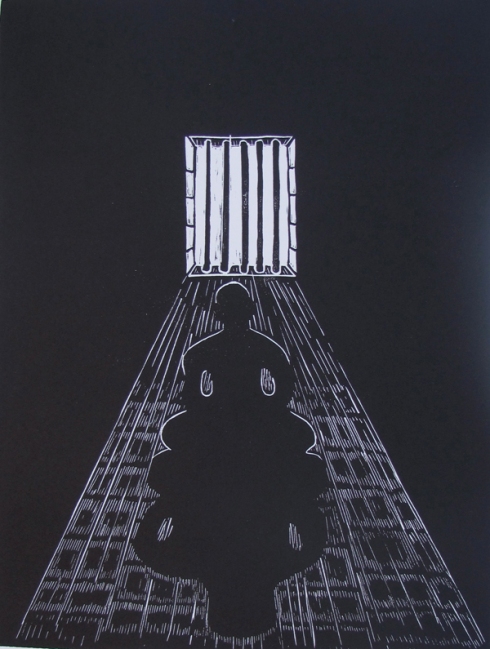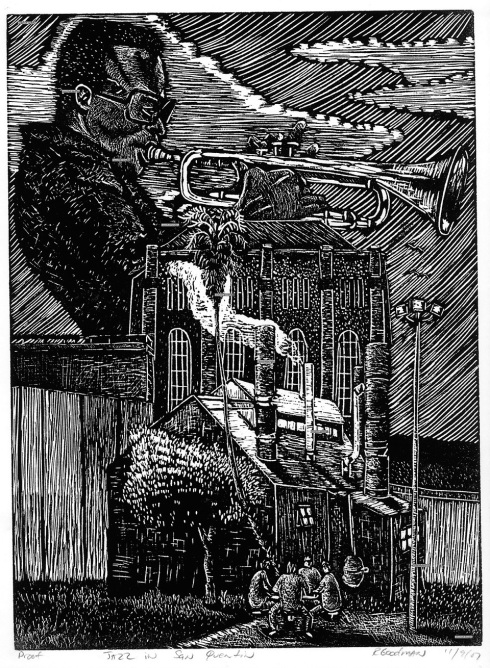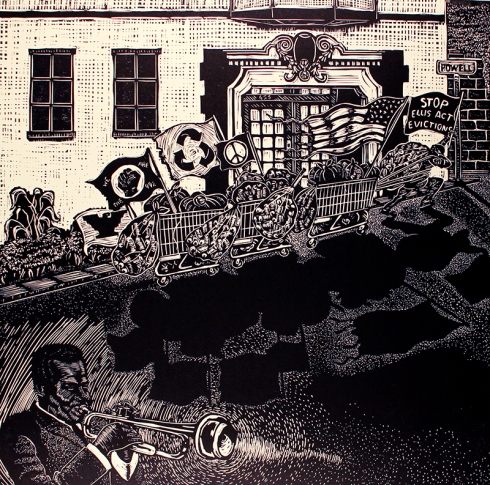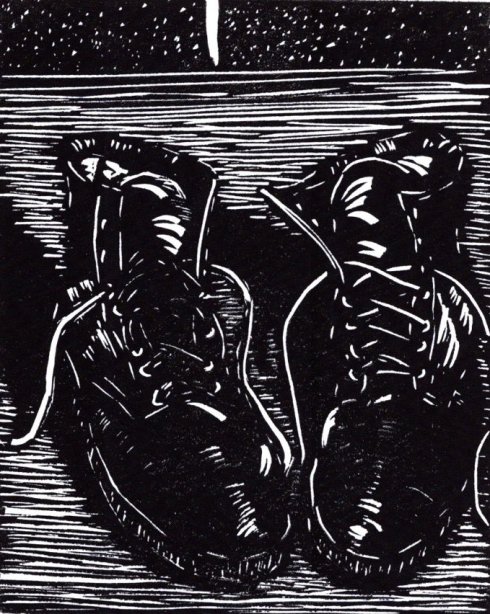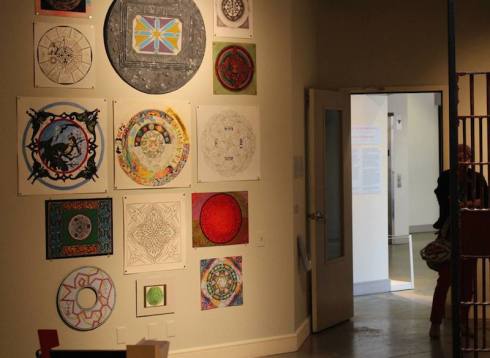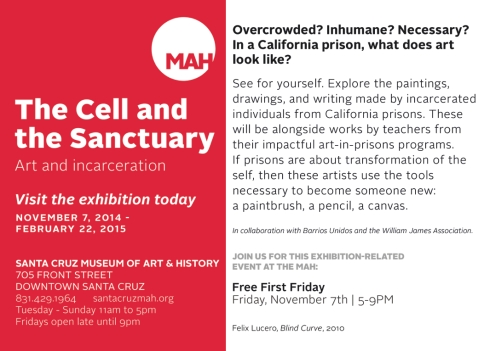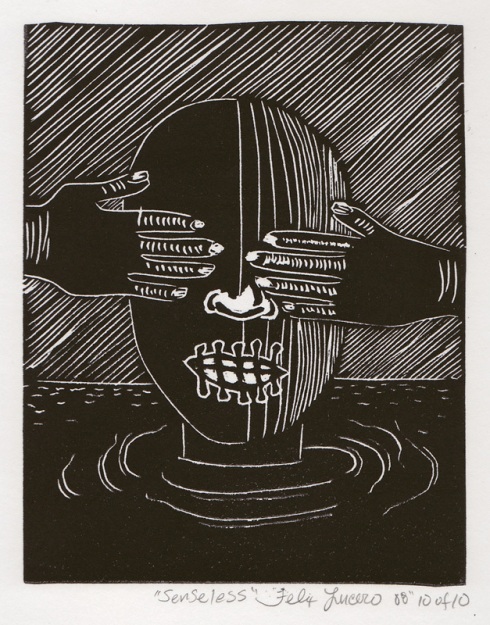You are currently browsing the tag archive for the ‘Barrios Unidos’ tag.
Tag Archive
‘The Cell and The Sanctuary’ Exhibit Makes Case that Art-In-Prison Programs Reduce Recidivism
November 19, 2014 in Activist Art, Amateur, Fine Art, Photography: Non-Prison | Tags: Barrios Unidos, California Lawyers for the Arts, Felix Lucero, Justus Evans, Laurie Brooks, Museum of Art & History, prison art, Ronnie Goodman, Santa Cruz, SCMAH, The Cell and the Sanctuary, William James Association | by petebrook | 3 comments
© Ronnie Goodman
ARTS AND RECIDIVISM
“Evidence suggests that arts-in-prisons programs lower recidivism (returning to prisons) by 27% and reduce disciplinary actions by 75%,” reads the press release for the prison art exhibition The Cell and the Sanctuary: Art and Incarceration currently on show at the Santa Cruz Museum of Art & History (SCMAH).
That’s a bold claim.
One of the great difficulties with justifying arts and/or liberal arts education is the difficulty in measuring its direct (positive) effects. Evaluation in budget-constrained prison systems is especially demanding and cynical. First and foremost, people want to know if any type of program steers a prisoner away from anti-social behaviour. If the answer is complex, partly elusive or complicated by other criteria then doubt descends, the enterprise is labeled as airy-fairy, and premise is dismissed.
In brief, prison arts programs wanting to prove themselves have a tough audience.
The effects of arts and education is difficult to track because many benefits such as relative thinking, critical engagement outside of institutional narratives, cumulative learning, etc. take years. Education is a slow build. Benefits are for years down the line; for a lifetime. Also, many prisoners are on long sentences and the primary criteria corrections departments and researchers look to – recidivism – can only be measured once a prisoner is released. The intangibles of a liberal arts education aren’t necessarily contributing to a measurable impact the next hour.
A general aura of skepticism surrounding arts and liberal arts education is compounded by the fact that research money often goes toward other prison programming (vocational, prison industries) and other evaluation first. We saw this was the case when the State of California stripped the DOC of its Arts-In-Corrections funding 7-years ago. In times of crisis, arts funding is first on the chopping block.
Despite no state funding, groups such as the William James Association continued, driven by volunteer efforts. The recent California budget has put millions back into the coffers earmarked for Arts-In-Corrections. The William James Association has returned to work in 11 state prisons.
The return was helped by the convincing results of a study, California Prison Arts Evaluation 2014, that was commissioned jointly by the William James Association and the California Lawyers for the Arts. You can download it here.
Here’s the results of the study and reason for bold claims.
The California Prison Arts Evaluation 2014 was a one-year study in four prisons revealing that arts programs improve prisoners’ behavior and their attitudes about themselves.
“A significant majority of inmates attribute their greater confidence and self-discipline to pursue other academic and vocational opportunities to their participation in arts programs, signaling a pathway for overall personal growth,” says the William James Association.
A BRIEF HISTORY OF RESEARCH
The author was Dr. Lawrence Brewster of the University of San Francisco who had, in 2012, completed a Qualitative Study of the California Arts In Corrections Program.
Prior to these two studies, there had been little research since a cost-benefit study in 1983, An Evaluation of the Arts-in-Corrections Program of the California Department of Corrections (also conducted by Brewster), which posited that society and the institutions benefited by reduced disciplinary actions, community service and beautification of the prisons.
It was high time someone brought the research up to date and dampened down naysayers and skeptics. Hopefully, the California Prison Arts Evaluation 2014 might spur other states to make a return to arts programming.
“Arts-in-prisons programs improve relationships between people within the prison as well as with guards and supervisory staff,” says the William James Association.” Prisoners exposed to arts programs are more likely to adjust to life outside prison and are less likely to become repeat offenders.”
‘Blind Curve’ (2010) © Felix Lucero
‘Lower Yard, San Quentin’ @ Ronnie Goodman
‘Baseball at Old Folsom Prison’ @ Ronnie Goodman
© Justus Evans
‘Obscuring Self’ © Rolf Kissman
‘Jazz In San Quentin’ @ Ronnie Goodman
‘Uphill Struggle’ @ Ronnie Goodman
The Cell & The Sanctuary opening, Santa Cruz Museum of Art & History, November 7th, 2014. Photo: Laurie Brooks / William James Association
‘Prison Boots’ @ Ronnie Goodman
Installation view of The Cell & The Sanctuary, Santa Cruz Museum of Art & History. Photo: Laurie Brooks / William James Association
THE CELL AND THE SANCTUARY
The Cell and The Sanctuary features paintings, drawings, sculptures and writings by teachers, artists and organizations who are “working together within the prison system to provide a direct link between incarcerated individuals and something larger than their dehumanizing cells,” says SCMAH.
Artists including Ronnie Goodman, Justus Evans, Felix Lucero and Rolf Kissman (whose works are included in this post) are in the exhibition, as well as Ned Axthelm, Peter Bergne, Guillermo Willie, Stan Bey, Khalifah Christensen, Dennis Crookes, Isiah Daniels, Bruce Fowler, Henry Frank, Roy Gilstrap, Thomas Grider, Gary Harrell, Amy M. Ho, John Hoskings, David Johnson, Ben Jones, Richard Kamler, Chung Kao, Darryl Kennedy, Katya McCollah, Pat Messy, Omid Mokri, Gerald Morgan, Carol Newborg, Stan Newborg, James Norton, Eric “Phil” Phillips, Anthony Marco Ramirez, Adrienne Skye Roberts, Mark Stanley, Fred Tinsley, Tan Tran, Kurt Von Staden, Geno Washington, Michael Williams, Thomas Winfrey, and Noah Wright
The Cell and the Sanctuary: Art and Incarceration is produced in collaboration with Barrios Unidos and the William James Association (also on Facebook)
It is on show November 7, 2014 – February 22, 2015

